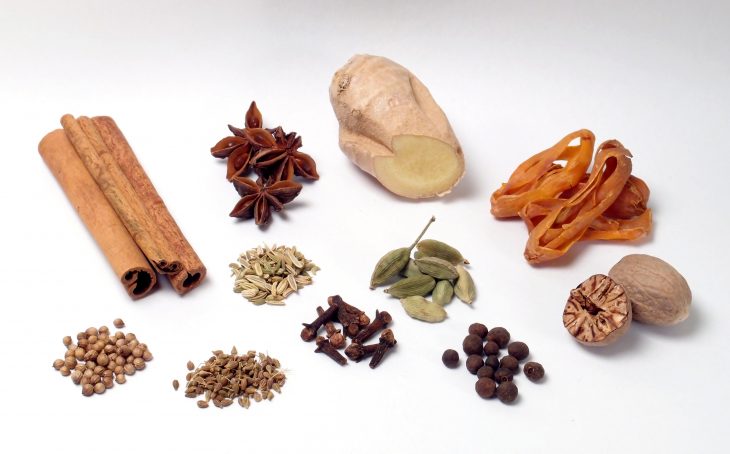
Spices can transform a simple dish into a culinary masterpiece. Ever wondered why your grandma’s stew tastes so magical? The secret often lies in the spices she used. From the warmth of cinnamon to the zing of ginger, these aromatic ingredients have been cherished for centuries. They not only add flavor but also bring a touch of history and culture to our plates. Imagine cooking without the vibrant colors of turmeric or the smoky allure of paprika. It’d be like painting without colors! So, ready to spice up your kitchen? Then let’s uncover the 21 common spices that every home cook should know.
1
of 21
Cinnamon

Cinnamon is a versatile spice used in both sweet and savory dishes, and known for its warm, sweet, and slightly spicy flavor. It is derived from the inner bark of the Cinnamomum tree and is available in both stick and grounded forms. Beyond being a culinary ingredient, cinnamon is celebrated for its potential health benefits because of its anti-inflammatory and antioxidant properties.
Read More About Cinnamon: 13 Facts About Cinnamon
2
of 21
Cayenne Pepper
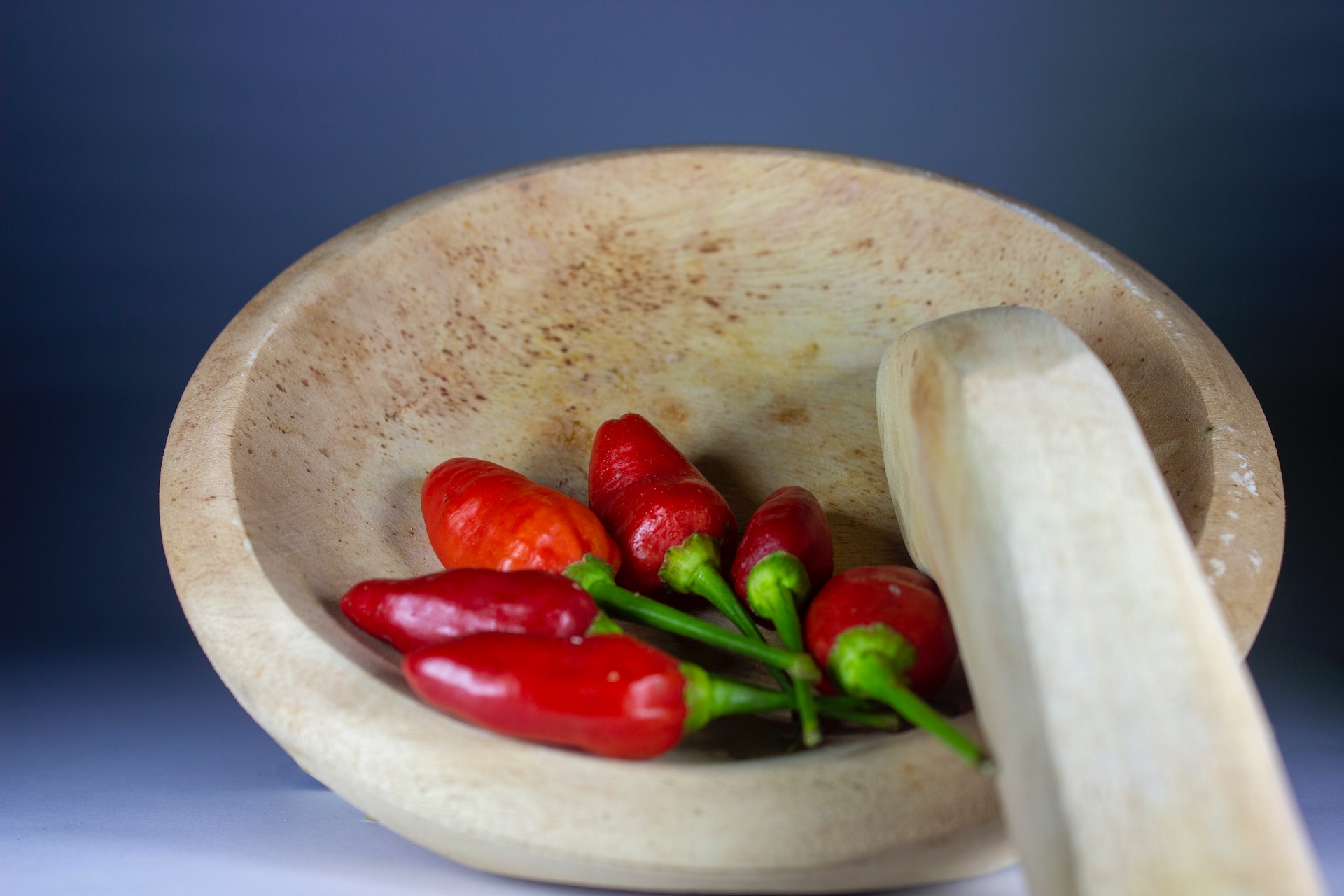
Cayenne pepper, a vibrant spice made from dried and ground red chili peppers, brings heat and depth to a wide range of dishes. Known for its pungent flavor, it’s a staple in soups, stews, and sauces. Beyond its distinctive taste, cayenne pepper is known to improve metabolism apart from offering other health benefits.
Read More About Cayenne Pepper: 19 Facts About Cayenne
3
of 21
Crushed Red Pepper
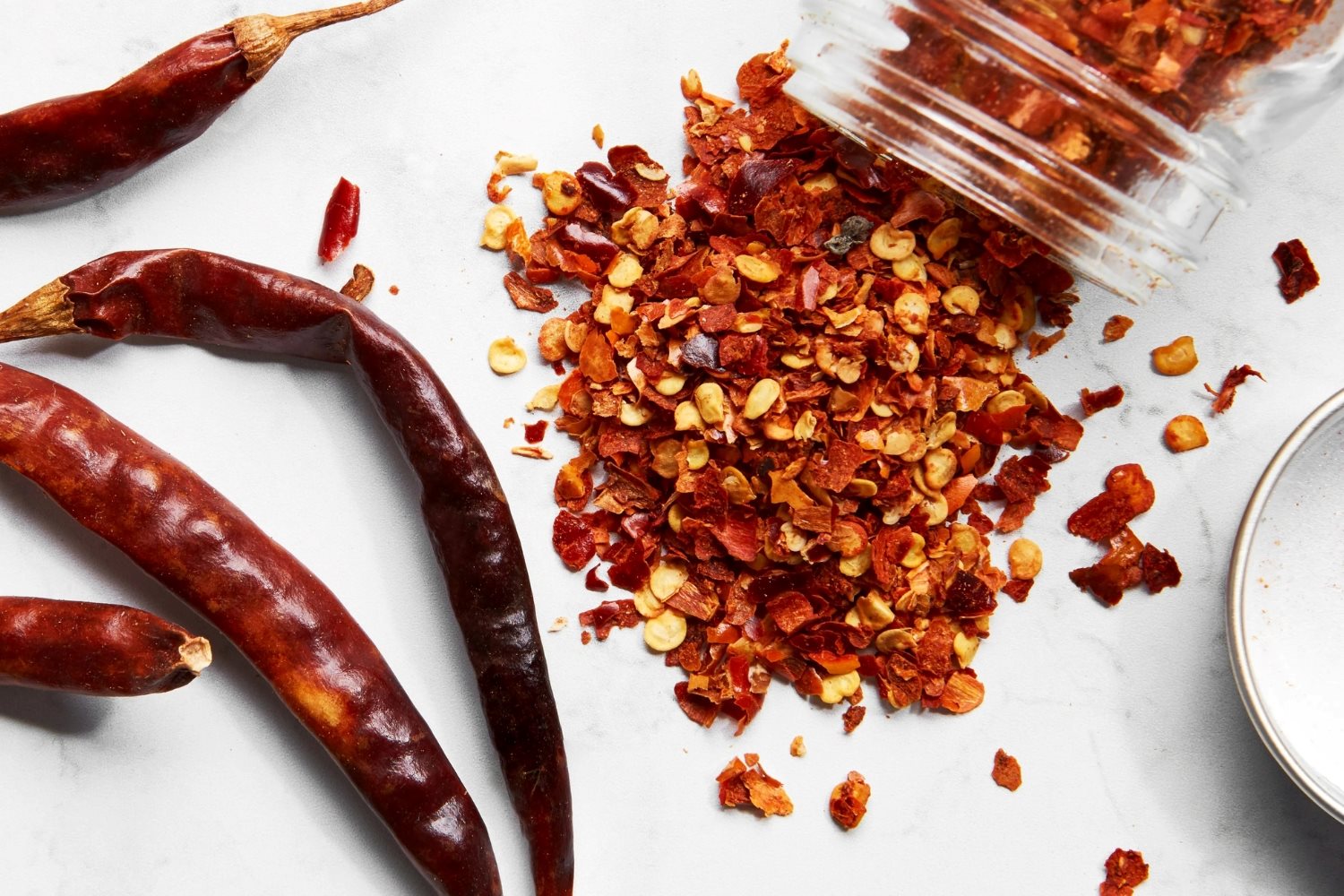
Crushed red pepper adds a vibrant kick to any dish, making it a favorite in kitchens worldwide. These fiery flakes are derived from dried and crushed red chili peppers, offering a bold flavor profile that enhances different food servings like pasta, and soups. Sprinkle it on pizza or stir-fries for an extra kick. Packed with capsaicin, crushed red pepper also have several health benefits, including boosting metabolism rate and reducing inflammation.
Read More About Crushed Red Pepper: 11 Crushed Red Pepper Nutrition Facts
4
of 21
Cumin
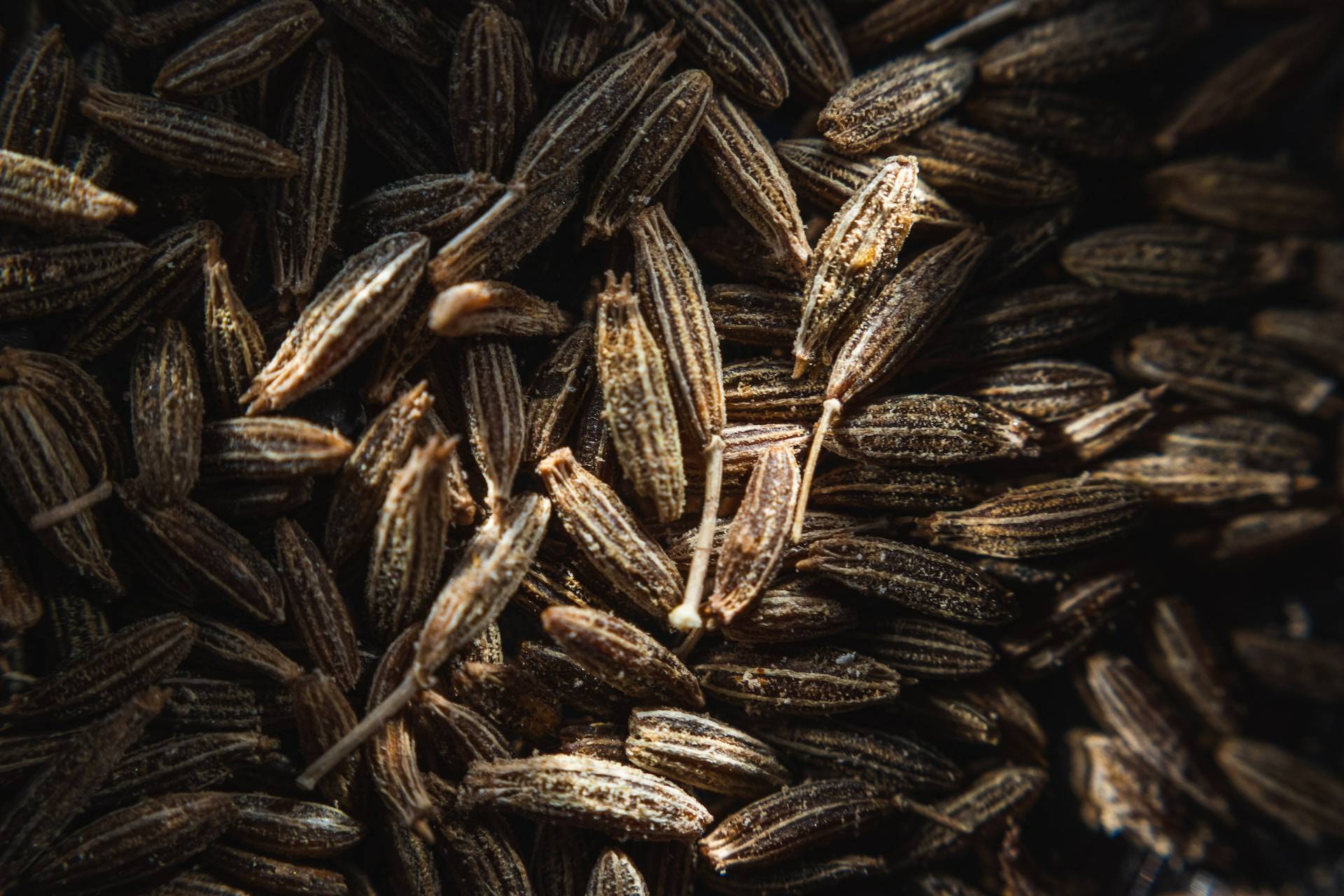
Cumin, a spice with a warm, earthy flavor, brings a distinctive taste to dishes. Used in various cuisines, it’s celebrated for its versatility and aromatic punch. Often found in both ground and whole seed forms, cumin’s nutty aroma enhances everything from curries to stews, Mexican salsas to Indian biryanis. Beyond its culinary uses, cumin has been valued for its potential health benefits, including aiding digestion and boosting the immune system. Whether you’re an aspiring chef or a home cook, this spice can elevate your culinary creations to new heights.
Read More About Cumin: 17 Facts About Cumin
5
of 21
Coriander
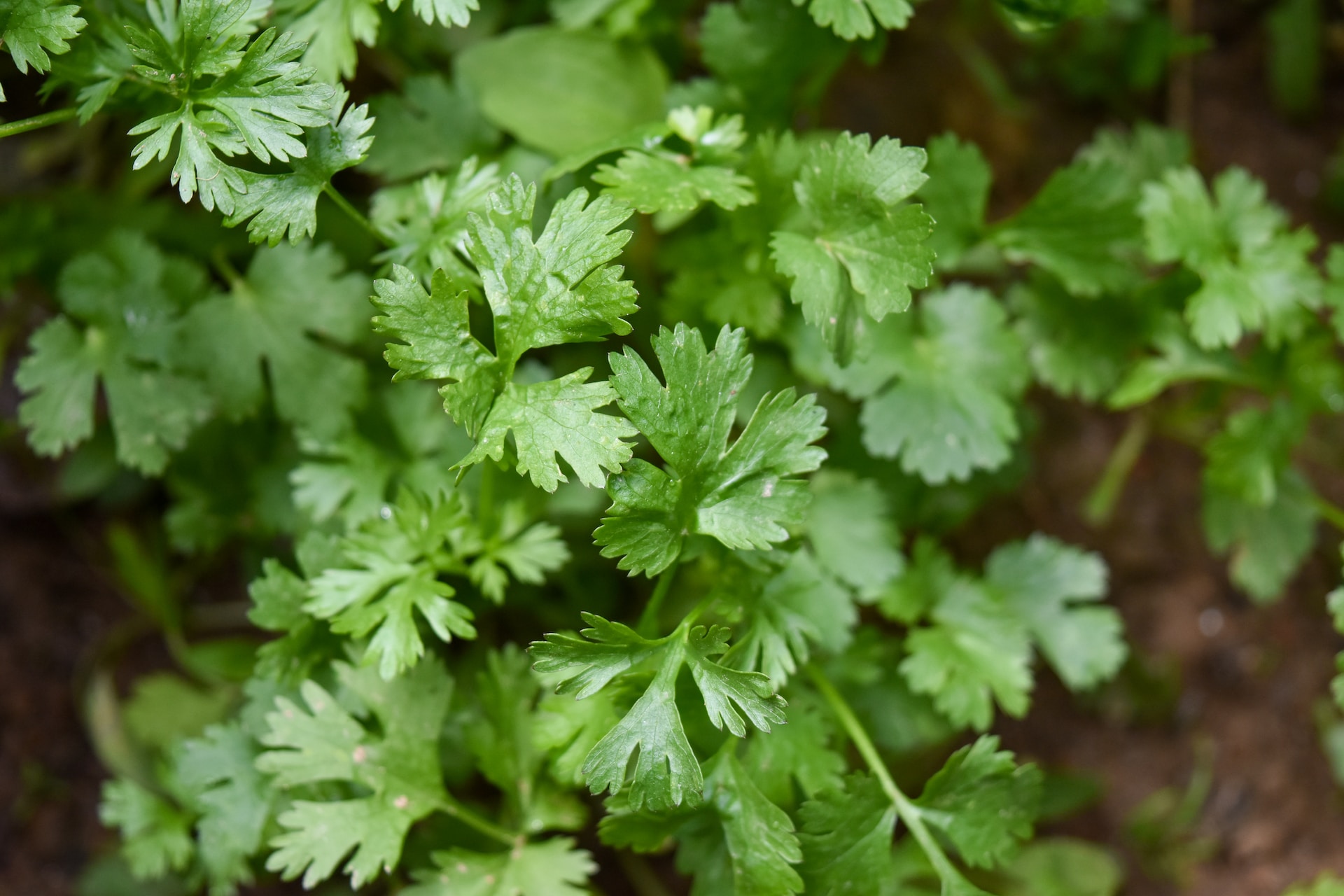
Coriander leaves, also known as cilantro, pack a delightful punch in the kitchen, bringing a fresh, citrusy flavor to dishes. These versatile green leaves are widely used in cuisines worldwide, from Mexican salsas to Indian curries. Rich in antioxidants, vitamins, and minerals, they not only enhance the taste but also provide numerous health benefits. Perfect for garnishing or adding to salads, stews, and sauces, coriander leaves elevate culinary creations with their vibrant aroma and taste. Easy to grow and readily available, they’re a must-have for spice enthusiasts looking to add a burst of freshness to their recipes.
Read More About Coriander: 20 Facts About Coriander Leaves
6
of 21
Turmeric
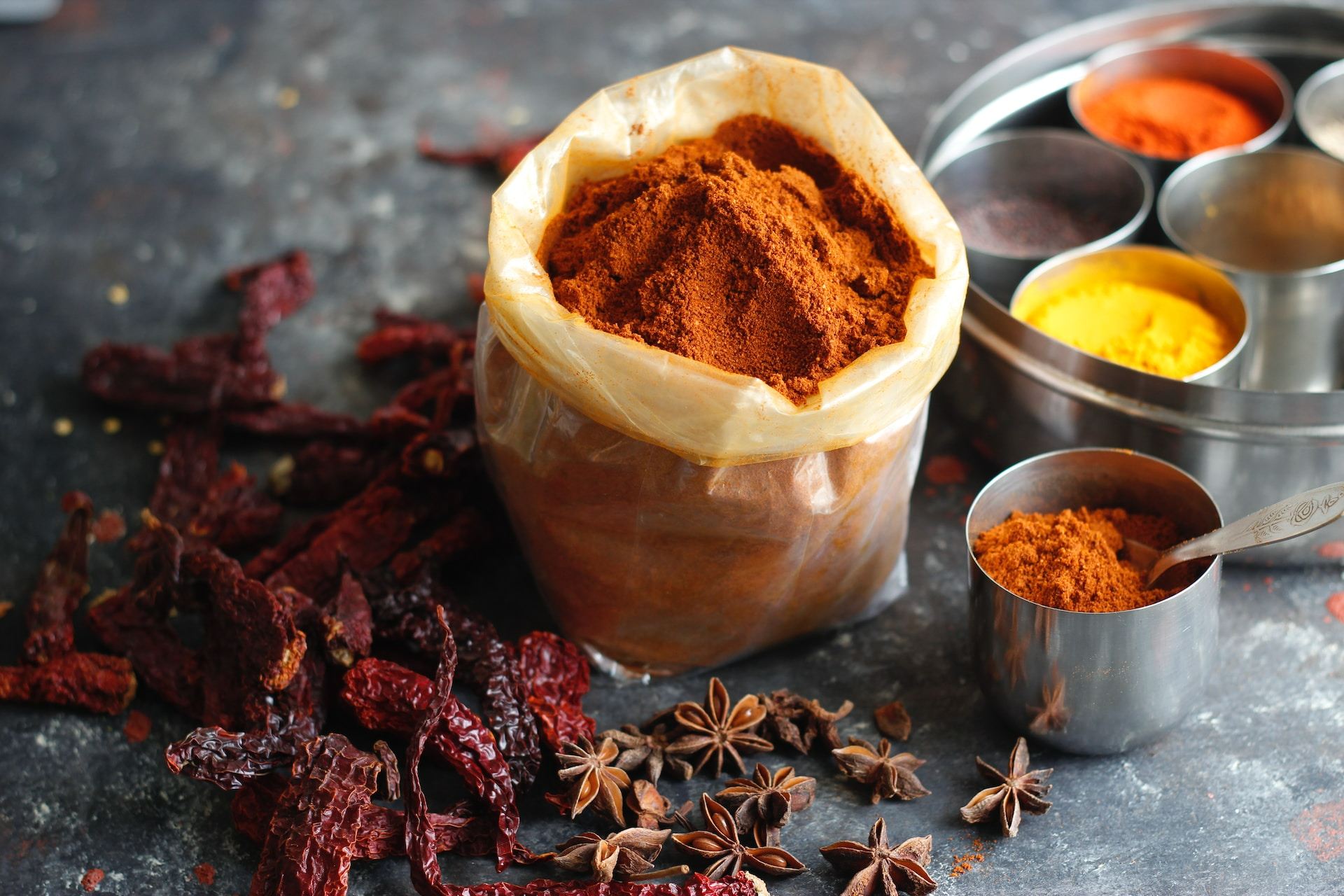
Turmeric, a vibrant yellow spice, hails from the ginger family. Known for its earthy aroma and slightly peppery flavor, it’s a staple in many culinary traditions. Used in Indian curries, it also finds its way into soups, rice dishes, and even smoothies. Beyond its culinary appeal, turmeric boasts of a long history in traditional medicine, as it has been credited with anti-inflammatory and antioxidant properties. Its active compound, curcumin, is often cited for potential health benefits. From adding color to dishes to contributing to well-being, turmeric’s versatility makes it a beloved ingredient in kitchens worldwide. Curious cooks and health enthusiasts alike find it indispensable.
Read More About Turmeric: 20 Facts About Turmeric
7
of 21
Paprika

Paprika, a vibrant red spice made from dried bell peppers and chili peppers, adds both color and flavor to dishes. Originating from Central America, it now flavors cuisines worldwide, from Hungarian goulash to Spanish chorizo. Sweet, smoky, or hot varieties bring different levels of heat and complexity to recipes. Its bright hue not only enhances the visual appeal of food but also packs vitamins A and E, with antioxidants that support overall health. Whether sprinkled on deviled eggs or mixed into marinades, paprika adds a delicious boost that’s both versatile and essential in any kitchen.
Read More About Paprika: 14 Facts About Paprika
8
of 21
Cloves
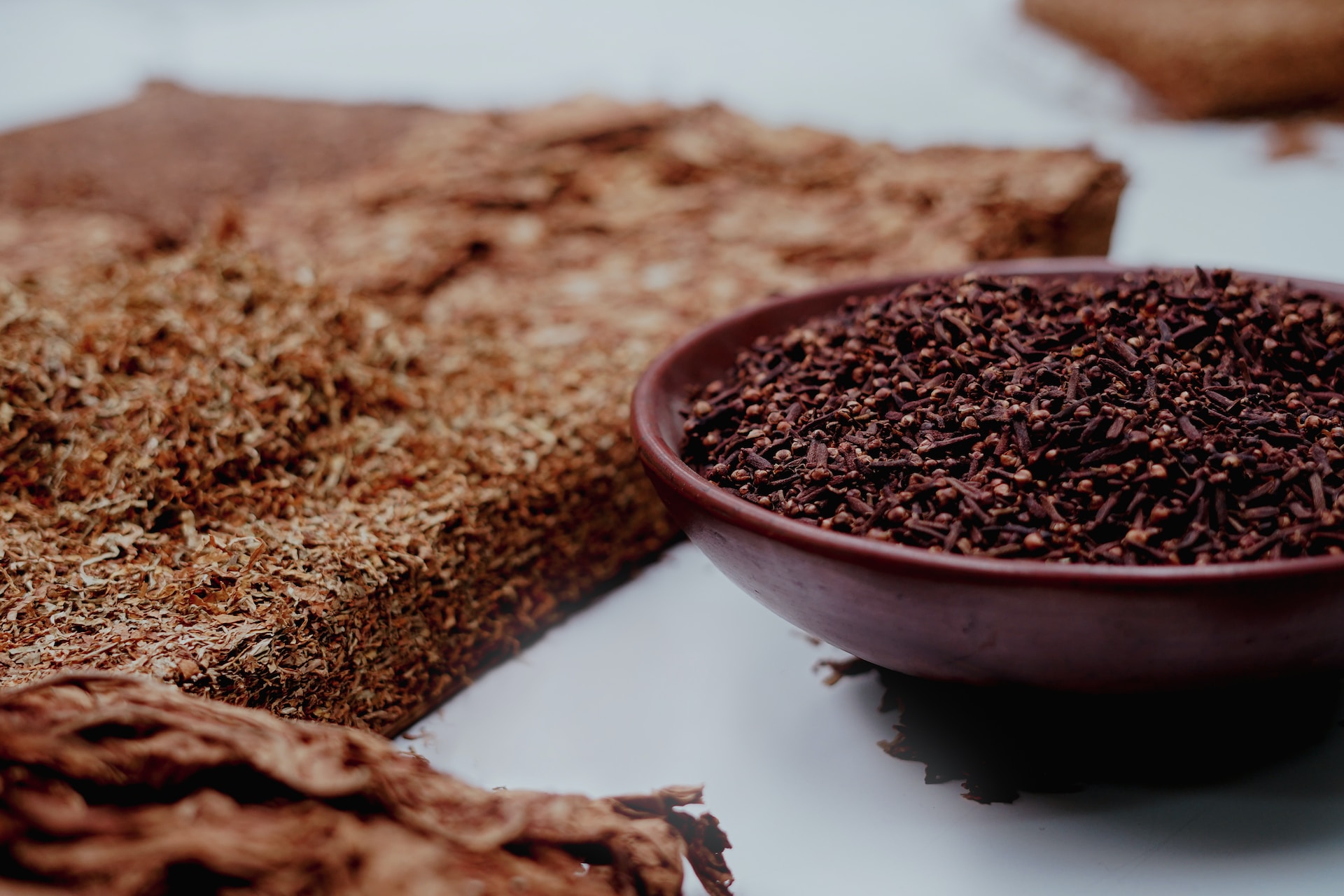
Cloves are the dried flower buds of a tree native to Indonesia, and are known for their aromatic and slightly sweet flavor. Used in both sweet and savory dishes, they provide a punch into holiday treats, curries, and mulled drinks. Rich in essential oils, cloves also have impressive medicinal properties, aiding in digestion and dental health. Their warm, spicy aroma makes them a popular addition to spice blends like garam masala and Chinese five-spice powder. From adding depth to a simple stew to jazzing up a dessert, cloves are a kitchen staple that brings a touch of exotic flair to any dish.
Read More About Cloves: 12 Facts About Cloves
9
of 21
Nutmeg

Nutmeg is a versatile spice that comes from the seed of the Myristica fragrans tree. It’s known for its warm, slightly sweet flavor and is commonly used in both sweet and savory dishes. A pinch can transform desserts like pies and custards, while also enhancing sauces, soups, and meats. Historically, nutmeg was so valuable it sparked wars. Beyond the kitchen, it’s popular for its medicinal properties, offering digestive and anti-inflammatory benefits. Whether you’re baking holiday treats or experimenting with global cuisines, this spice adds a distinct, aromatic touch that elevates any recipe.
Read More About Nutmeg: 19 Facts About Nutmeg
10
of 21
Ginger
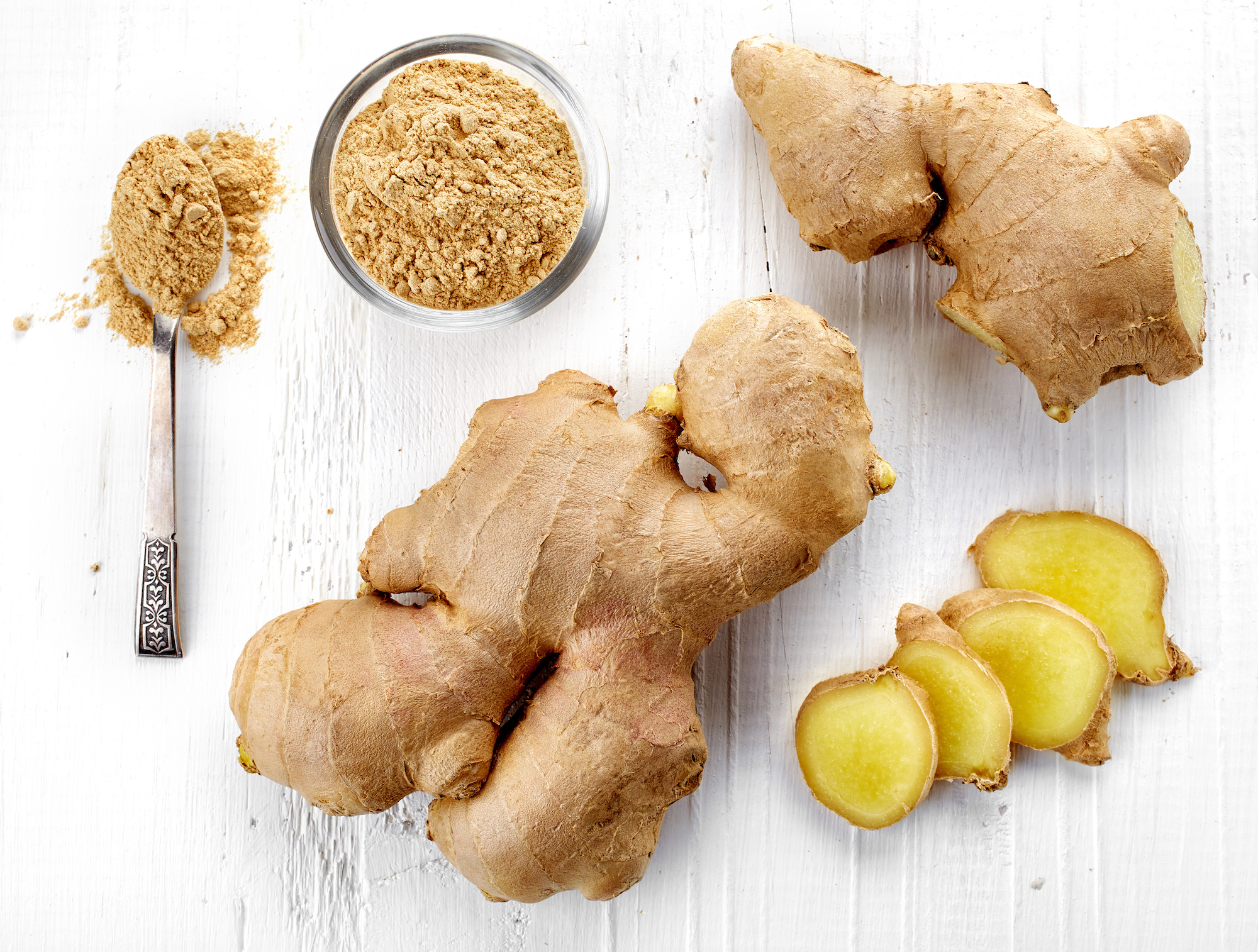
Ginger, a staple in kitchens worldwide, holds secrets that go beyond its zesty flavor. This versatile spice, celebrated for its culinary and medicinal uses, has a rich history and a multitude of benefits. From soothing digestive issues to spicing up dishes, ginger’s unique properties make it a must-have in any spice collection. With its warming kick and health-boosting compounds, this root transforms simple recipes into flavorful experiences while promoting wellness. Perfect for teas, savory dishes, and desserts, ginger’s multifaceted nature continues to charm food enthusiasts and health aficionados alike. Dive into the wonders of this remarkable spice!
Read More About Ginger: Ginger Facts
11
of 21
Garlic Powder
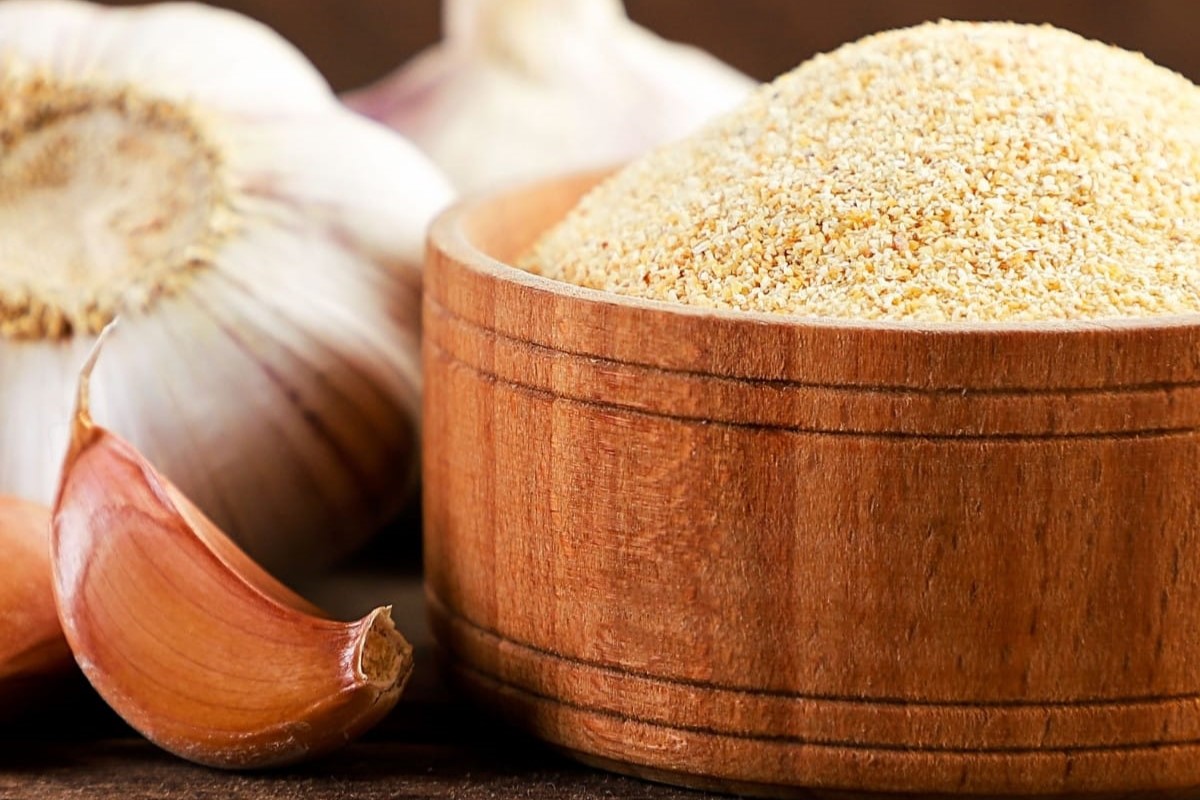
Garlic powder packs a punch when it comes to boosting flavor and adding nutritional benefits to your dishes. This versatile spice, derived from dehydrated garlic cloves, contains essential nutrients like vitamins C and B6, manganese, and selenium. It’s low in calories but high in antioxidants, which promotes overall health. Perfect for people watching their salt intake, garlic powder enhances the taste without the need for sodium. Sprinkling this spice into your meals can support heart health and immune function. Whether you’re whipping up a savory sauce, marinating meat, or seasoning veggies, garlic powder is your go-to for a healthy, flavorful kick.
Read More About Garlic Powder: 10 Garlic Powder Nutrition Facts
12
of 21
Onion Powder

Onion powder, a pantry staple, packs both flavor and nutrition into every sprinkle. This versatile spice is made from dehydrated ground onions, offering a convenient way to enhance dishes. Bursting with essential nutrients, onion powder provides a good dose of vitamins, minerals, and antioxidants. It can boost the immune system, improve digestion, and add an extra punch to your meals. From soups and stews to marinades and rubs, using this mighty powder can elevate any dish with its bold, savory taste.
Read More About Onion Powder: 11 Onion Powder Nutrition Facts
13
of 21
Chili Powder
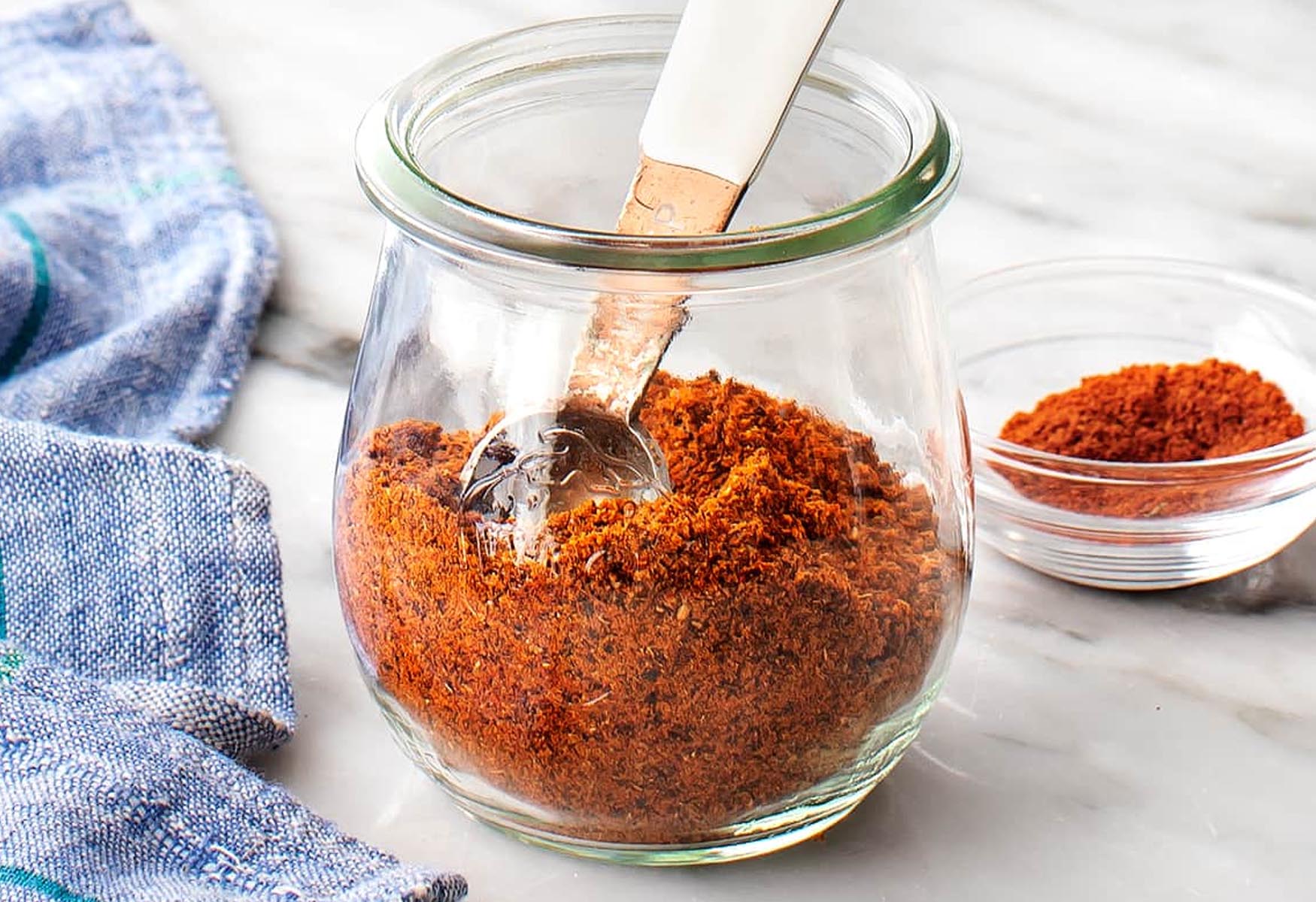
Chili powder not only packs a flavorful punch but also offers surprising health benefits. A staple in many kitchens, it adds more than just heat to your dishes. Rich in vitamins A and C, chili powder helps improve your immune system and vision. Antioxidants found in chili powder also help fight inflammation and oxidative stress. Capsaicin, the component giving chili its kick, may boost metabolism and reduce pain. Also, this spice provides essential minerals like iron, potassium, and magnesium. Incorporating chili powder into your meals can enhance flavor while contributing to overall well-being. It’s a versatile addition to your spice rack with impressive nutritional perks.
Read More About Chili Powder: 10 Chili Powder Nutrition Facts
14
of 21
Cardamom
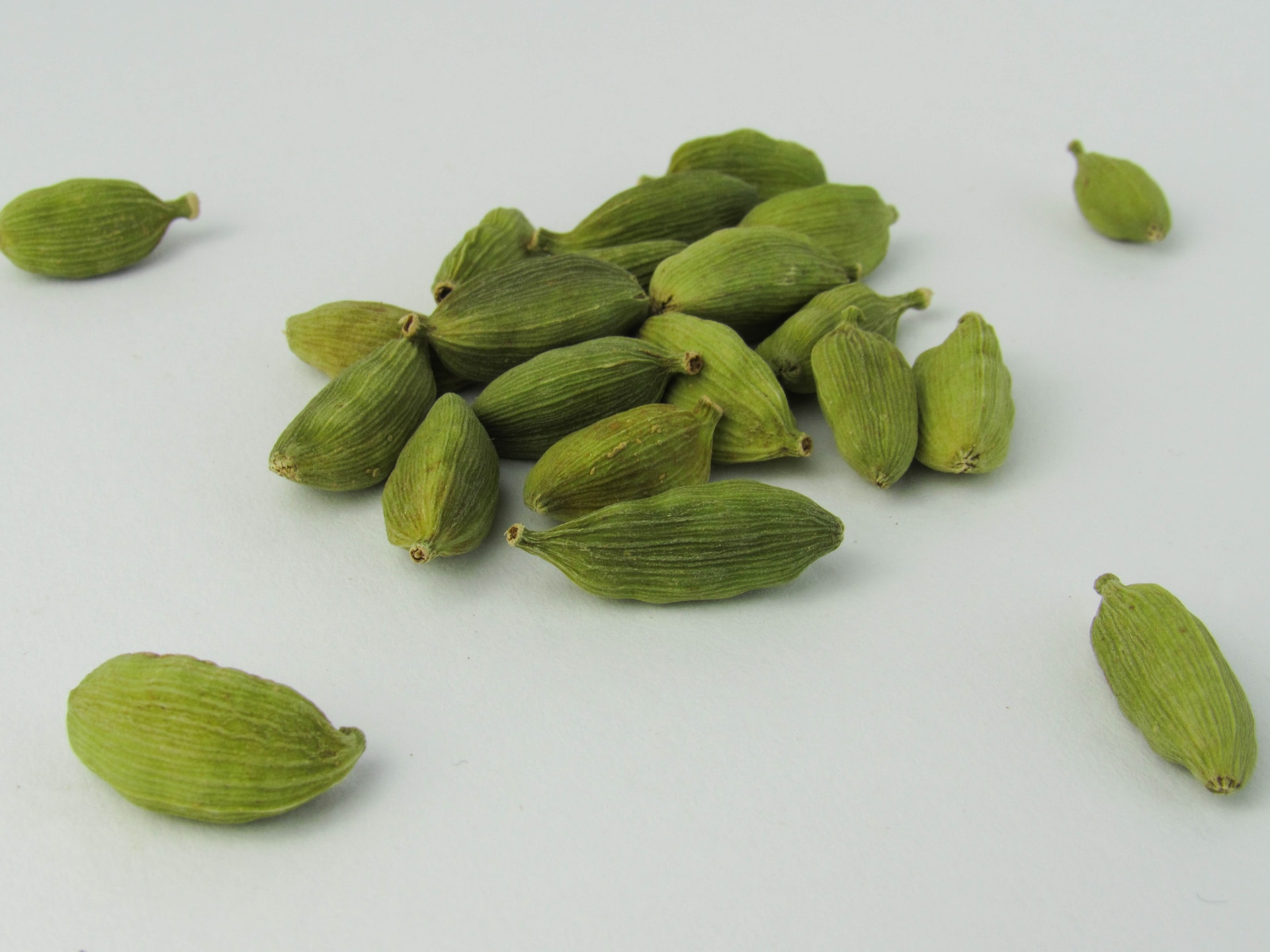
Cardamom, hailed as the ‘Queen of Spices,’ infuses dishes with a sweet, floral flavor that’s hard to beat. Originating from India, this aromatic spice comes in green and black varieties, each with distinct uses in both sweet and savory dishes. Green cardamom, often used in desserts and teas, adds an exotic touch, while black cardamom’s smoky undertones enhance hearty meat dishes. Beyond taste, cardamom offers several health benefits, including aiding digestion and freshening breath. Whether ground or whole, this versatile spice elevates culinary creations, making it a must-have in any spice rack.
Read More About Cardamom: 14 Facts About Cardamom
15
of 21
Mustard Seeds
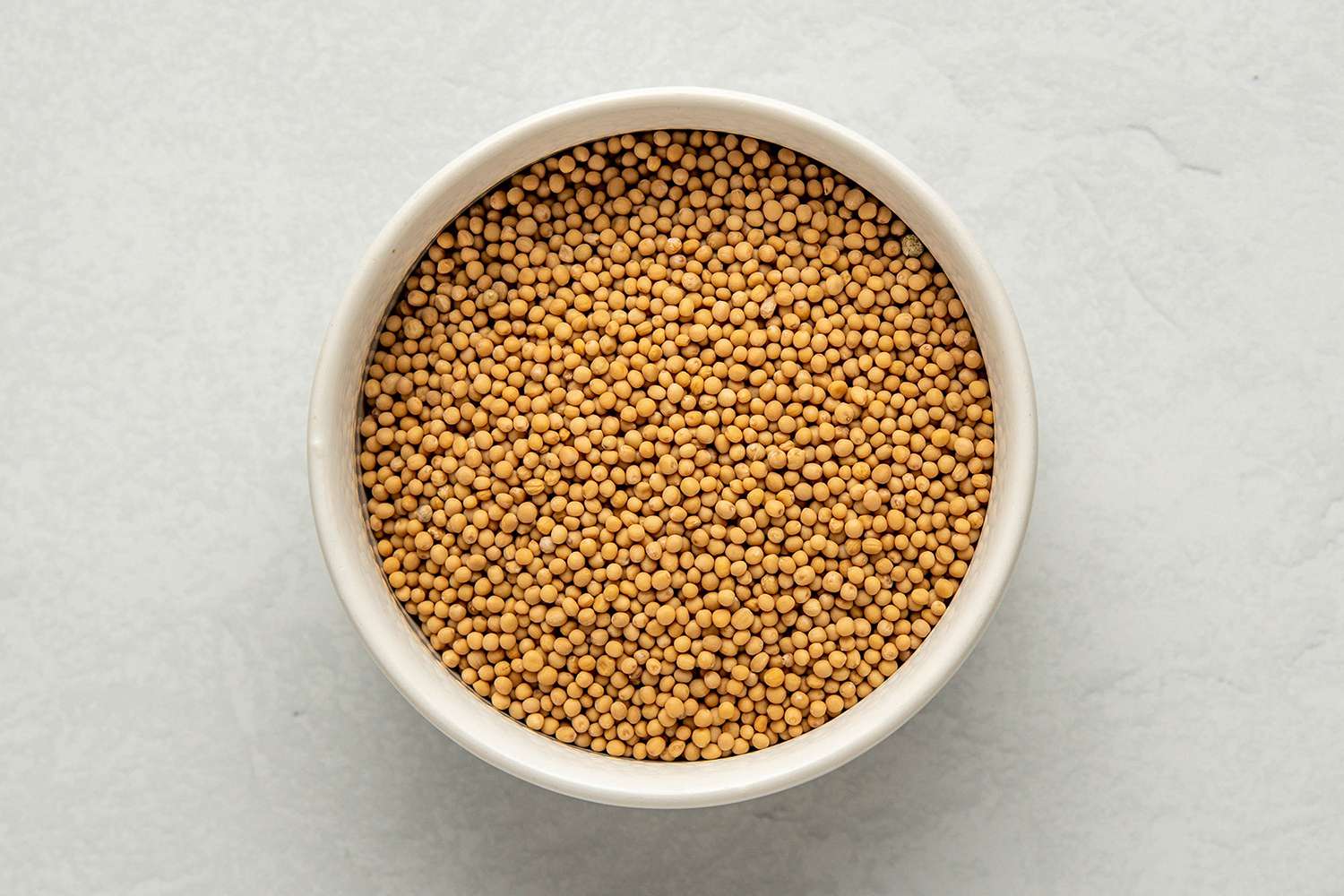
Mustard seeds are tiny powerhouses in the spice world, known for packing a punch of flavor in cooking. These small round seeds come from mustard plants, mainly black, brown, and white varieties. Often grounded into powder or used whole, they’re famous for their role in pickles and dressings. The seeds’ pungency and heat can also transform dishes, adding complexity and depth. Mustard seeds, with their remarkable versatility, have become a staple in kitchens worldwide, proving that big things come in small packages.
Read More About Mustard Seeds: 17 Facts About Mustard Seed
16
of 21
Fennel Seeds

Fennel seeds, the small greenish-brown seeds with a sweet, licorice-like flavor, are a staple in many kitchens. Known for their aromatic and medicinal properties, fennel seeds add a burst of flavor to dishes like curries, soups, and bread. Their slightly sweet taste pairs well with both savory and sweet foods. Often used in teas to aid digestion, fennel seeds boast of a rich history in culinary traditions around the world. Besides spicing up your meals, they offer various health benefits, such as reducing bloating and improving appetite. Fennel seeds are perfect for adding a unique twist to your cooking creations.
Read More About Fennel Seeds: 20 Facts About Fennel Seeds
17
of 21
Bay Leaves

Bay leaves come from the laurel tree, adding a subtle flavor to soups, stews, and sauces. They’re known for their aromatic quality, often used in dried form. Tossing a leaf or two into a pot can transform a dish with a hint of herbal essence. Removing them before serving prevents a bitter taste. Besides culinary uses, bay leaves also hold a place in ancient traditions and served as a natural remedy for various ailments. Whether simmering a hearty beef stew or slow-cooking a tomato sauce, bay leaves elevate the overall taste, making them a kitchen staple worth exploring.
Read More About Bay Leaves: 17 Facts About Bay Leaves
18
of 21
Oregano
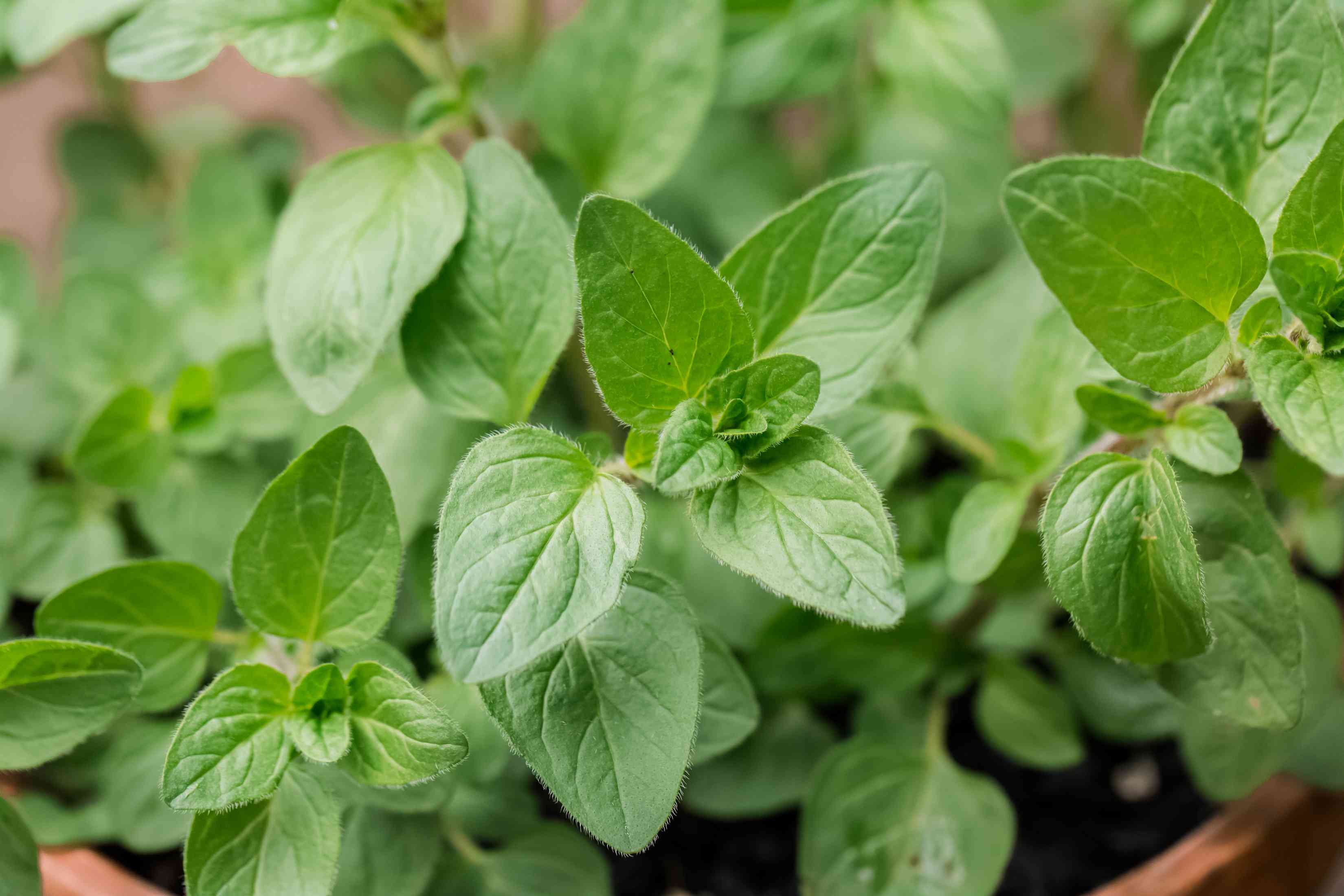
Oregano, a beloved herb in Mediterranean cuisine, brings a robust flavor to a variety of dishes. Known for its slightly bitter and peppery taste, it pairs well with meats, sauces, and vegetables. Besides its culinary uses, oregano has medicinal benefits, thanks to its antioxidant and anti-inflammatory properties. Often used dried or fresh, it’s a staple in Italian and Greek cooking. Imagine the aroma wafting from a bubbling pot of tomato sauce or a crispy pizza; that’s oregano working its magic. Easy to grow, this hardy plant belongs in every kitchen garden. Get ready to spice up your meals with this versatile herb!
Read More About Oregano: 20 Facts About Oregano
19
of 21
Thyme
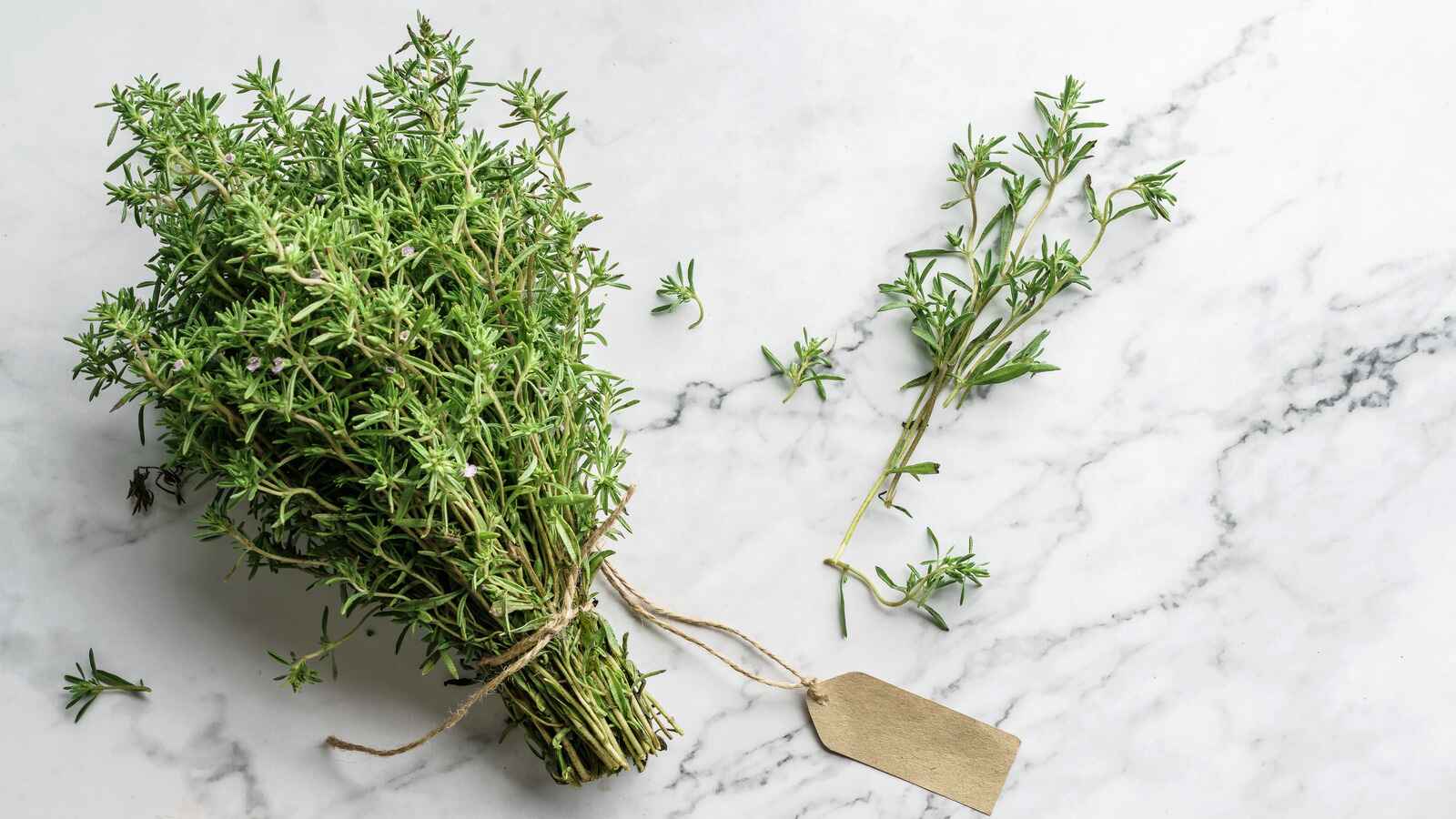
Thyme, a versatile herb, brings an earthy, slightly minty flavor to various dishes. Originating from the Mediterranean, it’s a staple in many cuisines due to its robust aroma and medicinal properties. This perennial herb can be used fresh or dried, perfect for seasoning meats, soups, stews, and even breads. Its tiny leaves pack a punch, offering both taste and health benefits. Thyme also pairs well with other herbs, enhancing their flavors without overpowering. Whether in a bouquet garni, sprinkled over roasted vegetables, or infused in oils, thyme is a culinary essential.
Read More About Thyme: 16 Facts About Thyme
20
of 21
Rosemary
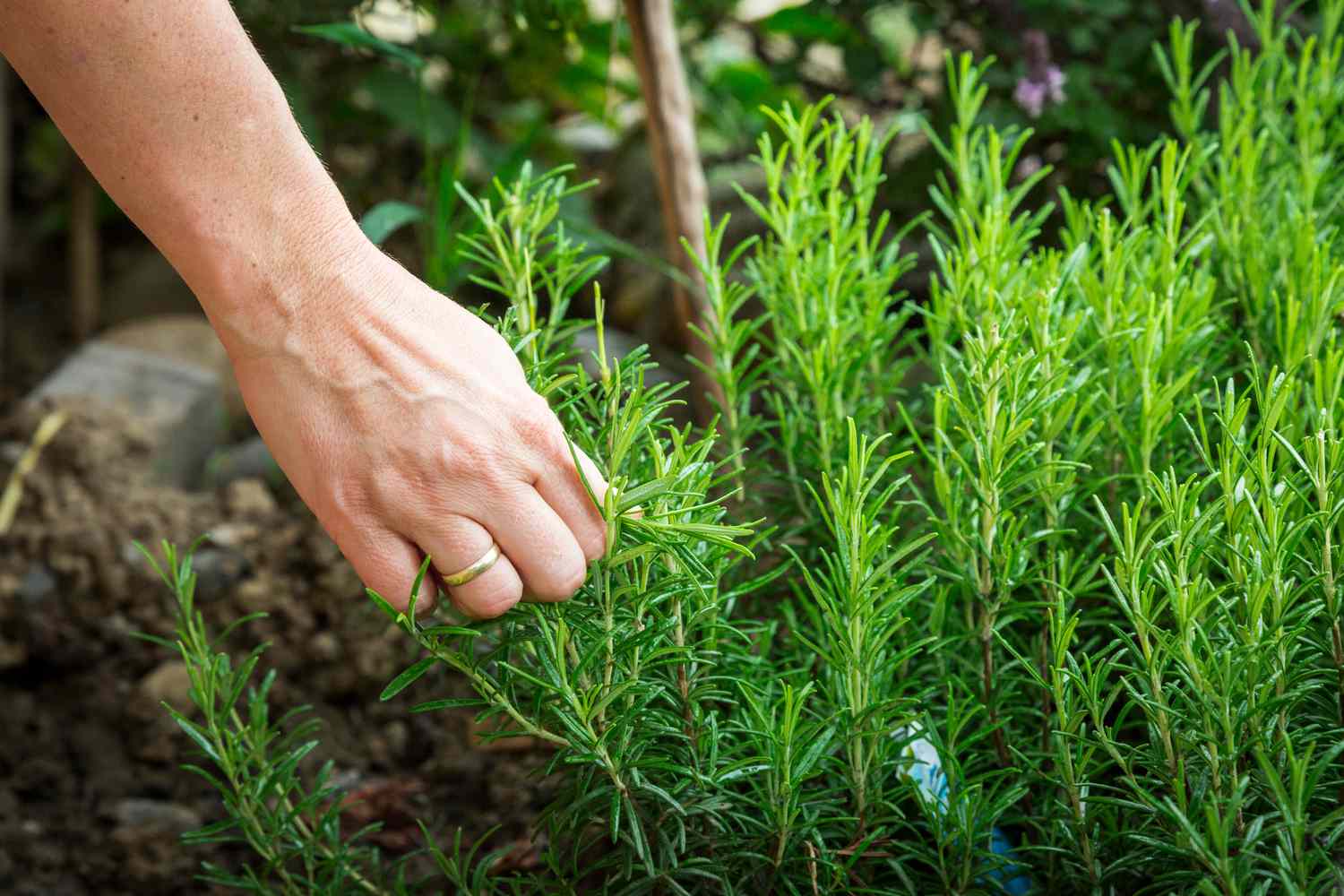
Rosemary, a fragrant herb with needle-like leaves, has a storied history in culinary arts. This versatile spice, often used in Mediterranean dishes, brings an earthy, pine-like flavor to recipes. From enhancing roasted meats to infusing oils, rosemary elevates any dish with its robust aroma and taste. Whether added fresh or dried, it doesn’t just spice up meals because it also holds a revered spot for its potential health benefits. Its leaves, rich in antioxidants, have been used for centuries not only in cooking but also in traditional medicine.
Read More About Rosemary: 15 Facts About Rosemary
21
of 21
Basil

Basil, a popular herb in many kitchens, adds a burst of flavor to countless dishes. Known for its aromatic leaves, it’s a staple in Italian cuisine, often enhancing pasta sauces, pizzas, and salads. With varieties like sweet basil, Thai basil, and holy basil, this spice offers a unique twist to any menu. Beyond its culinary uses, basil are known for their medicinal properties as they are believed to aid digestion and reduce inflammation. Its vibrant green leaves can even act as a natural insect repellent. Whether fresh or dried, basil’s versatility makes it a must-have in spice racks.
Read More About Basil: 13 Fascinating Facts About Basil
Was this page helpful?
Our commitment to delivering trustworthy and engaging content is at the heart of what we do. Each fact on our site is contributed by real users like you, bringing a wealth of diverse insights and information. To ensure the highest standards of accuracy and reliability, our dedicated editors meticulously review each submission. This process guarantees that the facts we share are not only fascinating but also credible. Trust in our commitment to quality and authenticity as you explore and learn with us.
